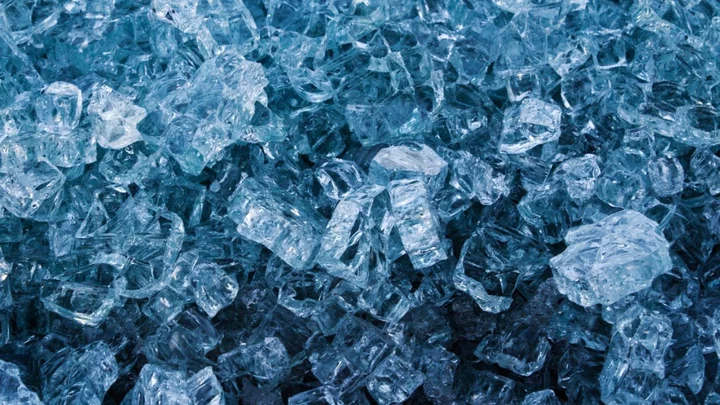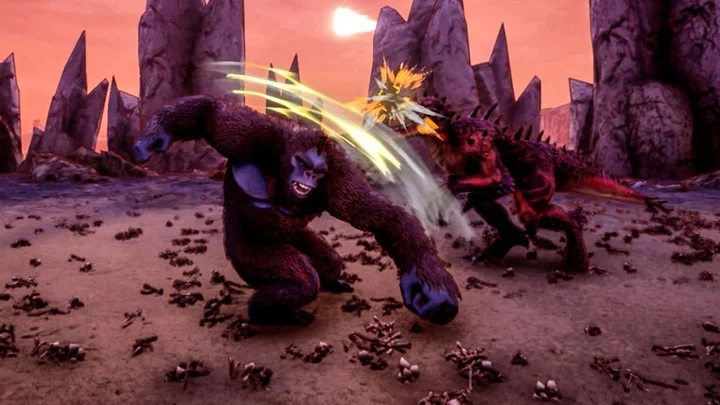
Huge shipwreck discovered after 128 years by crew making a nature documentary
A massive shipwreck which hasn’t been seen since it sank 128 years ago has been discovered by a crew making a nature documentary. Filmmakers were working on a project about a mussel species which lives in the Great Lakes in the US when they made the unexpected find. Yvonne Drebert and Zach Melnick were researching the invasive quagga mussel when they stumbled upon the steamship Africa, Fox Weather reports. The ship was sunk in 1895 after travelling from Ohio to Ontario on Lake Huron in dangerous conditions. The wreck was found after the filmmakers’ underwater drone detected something big and a camera was sent down to take a look. “It got more and more definition as we got closer and closer, and all of a sudden, we could see, ‘Wow, this is a steamship, a wooden steamship!'” Melnik said. “So this is old, and it is incredibly well intact.” The discovery was made possible due to the mussel species, which had covered the wreckage. The ship was identified as the Africa. Since the discovery, families of the people who were lost on board have been in touch with the filmmakers. “One of the incredible things that’s happened since this story has come to light just a couple of weeks ago is that several of the descendants of family members who died on this wreck so many years ago have reached out to us,” Melnick said. “We’re working with those families to try to find a way to remember those sailors who had died 128 years ago.” The mussel species will eventually destroy the wreckage, and the quagga can be hugely damaging to natural environments. The Center of Invasive Species Research in Riverside, California, reports that quagga [and zebra mussels] invasions “have had catastrophic impacts in the ecosystems in which they have established.” “These organisms clog water intake structures (e.g., pipes and screens), which greatly increases maintenance costs for water treatment and power plants,” the organization adds on its website. “Recreational activities on lakes and rivers are adversely affected as mussels accumulate on docks, buoys, boat hulls, anchors and beaches can become heavily encrusted.” “Interestingly, invasions by quagga and zebra mussels have been documented as having some positive affects on receiving ecosystems. For example, filtration of water by mussels as they extract food removes particulate matter. This filtration has improved water clarity, and reduced the eutrophication of polluted lakes.” Sign up for our free Indy100 weekly newsletter Have your say in our news democracy. Click the upvote icon at the top of the page to help raise this article through the indy100 rankings
2023-10-21 17:51

Giant heat-emitting mass discovered under the surface of the Moon
A huge mass of heat-emitting rock has been found buried beneath the surface of the Moon. The incredible discovery was made beneath one of the Moon’s craters, where a large mass of granite has slowly been releasing heat for years. Experts know that the Moon used to have eruptions and lava fields flowing from it, but until now, they have never uncovered evidence that is reminiscent of Earth-like volcanoes, underneath which granite forms when magma cools and crystalises deep beneath the surface. Now, that has changed after astronomers looked a bit more deeply at what lies beneath the Compton and Belkovich craters, located on the far side of the Moon. There they came across a large piece of granite rock that is emitting heat. The discovery excited experts as granite is not commonly found outside of Earth. Granite on the Moon was discovered using data from both Chinese and American lunar orbiters, and the information has revealed a whole new volcanic process never before witnessed. In a statement, one of the lead researchers, Dr Matt Siegler, from the Planetary Science Institute, said: “Using an instrument looking at microwave wavelengths – longer than infrared – sent to the Moon on both the Chinese Chang’E 1 and 2 orbiters, we have been able to map temperatures below the surface. “What we found was that one of these suspected volcanoes, known as Compton-Belkovich, was absolutely glowing at microwave wavelengths.” He continued: “What this means is that it is hot, not necessarily at the surface, as you would see in infrared, but under the surface. “The only way to explain this is from extra heat coming from somewhere below the feature within the deeper lunar crust. So Compton-Belkovich, thought to be a volcano, is also hiding a large heat source below it.” Using the data, they believe the 12-mile wide dip makes up the caldera, or depression, of the ancient volcano, where the surface temperature is 10°C higher than the surrounding areas. The volcano is thought to have last erupted 3.5 billion years ago and experts believe the heat that is emitting from the granite below is due to trapped radioactive material in the rock. Sign up to our free Indy100 weekly newsletter Have your say in our news democracy. Click the upvote icon at the top of the page to help raise this article through the indy100 rankings.
2023-10-19 19:54

Marvel's Spider-Man 2 disc players need to download this update before launch
'Marvel's Spider-Man 2' has some refinements that disc players will get from downloading the launch update.
2023-10-19 19:20

Pets pose a serious health threat that we've all been overlooking
While millions of people own cats and dogs and wouldn’t dream of getting rid of them, pets pose a health risk to humans that is massively overlooked, according to a new study. Since the Covid-19 pandemic swept the world with devastating impact, it has become evident how much of a risk new viruses can pose to our well-being. However, experts are warning that it is not just the wildlife trade or exotic animals that we should be concerned about, as pets could also be sources of zoonotic diseases (which jump from animals to humans). Back garden pets, house pets, working animals and even rodents and pests could host new viruses that could affect humans, according to a new study. It warns that the urbanisation of our habitats and climate change will have an impact on diseases and their dynamics. The study was shared in Science Translational Medicine and penned by disease ecologist Amandine Gamble along with a group of colleagues, who gave examples of how companion animals (aka pets) and stray animals carried a risk of zoonotic spillover. While the risk is thought to be small, experts warn it is significantly underappreciated, especially given the frequent proximity human beings have to pets and strays. The study said: “These animals can play critical roles in zoonotic spillover by enabling the maintenance of a zoonotic pathogen, facilitating its spatial spread, acting as a bridge between otherwise unconnected species, or providing particular opportunities for its evolution.” While the zoonotic spillover that caused Covid-19 sparked a global pandemic, any instance of infection that jumps from animal to human is known as a zoonotic, regardless of the numbers affected. Pet parrots are a known transmitter of the Chlamydia psittaci bacterium to humans. Elsewhere, bats and horses are also known sources of zoonotic diseases. In terms of common household pets, cats can act as a link to a number of fatal diseases. The experts explained: “Numbers of infections are low, but plague is endemic in 17 western U.S. states, and many of the small mammals on which cats prey carry Y. pestis. “Consequently, outdoor cats and cats with incomplete veterinary care, combined with human interaction, suggest that cat-transmitted plague can be considered an increasing public health risk.” They conclude that “it is critical to implement surveillance programs allowing us to track changes in pathogen dynamics”. Sign up to our free Indy100 weekly newsletter Have your say in our news democracy. Click the upvote icon at the top of the page to help raise this article through the indy100 rankings.
2023-10-19 17:21

Science recreate mysterious ice found on Neptune that only melts at extreme temperatures
Five years ago, scientists managed to recreate what is known as superionic ice, in lab experiments for the first time. Superionic ice is believed to form within Uranus and Neptune as familiar materials are subjected to extreme pressures and heat, with iron atoms forming hot, black, heavy ice. But just last year researchers at several universities in the United States discovered a new phase of superionic ice. The discovery helps broaden our understanding of why Uranus and Neptune have off-kilter magnetic fields with multiple poles. Different to forms of water on Earth, the oxygen atoms in superionic ice are locked in a solid cubic lattice, while the ionised hydrogen atoms are loose, flowing through the lattice. This gives superionic ice conductive properties as well as raising its melting point, meaning the frozen water remains solid at temperatures up to 4704 Degree Celsius (8500 Fahrenheit). In this latest study, Stanford University's Arianna Gleason and colleagues blasted thin slivers of water, sandwiched between two diamond layers, with some extremely powerful lasers. "Recent discoveries of water-rich Neptune-like exoplanets require a more detailed understanding of the phase diagram of [water] at pressure–temperature conditions relevant to their planetary interiors," Gleason and colleagues explain in their paper, from January 2022 X-Ray diffraction revealed the hot, dense ice's crystal structure, and confirmed the ice crystals were in fact a new phase, distinct from the superionic ice that was observed in 2019. This newly discovered superionic ice, Ice XIX, has increased conductivity compared to its 2019 predecessor. The conductivity is important because it helps us understand why certain off-kilter magnetic fields are generated on planets such as Neptune and Uranus. You can read the paper, published in Scientific Reports here. Sign up to our free Indy100 weekly newsletter Have your say in our news democracy. Click the upvote icon at the top of the page to help raise this article through the indy100 rankings.
2023-10-19 16:53

New King Kong game is being torn apart by the internet
The new King Kong video game, Skull Island: Rise of Kong, has released to an awful reception, with some naming it as the 'worst game of the year'. A new beat-em-up starring colossal kaiju favorite King Kong, flying in under-the-radar? You might be thinking 'sign me up' for a bit of that. If you're thinking that, you might want to hold back. Skull Island: Rise of Kong was only announced in July, and is available on PlayStation 5, Playstation 4, Xbox Series X/S, Xbox One, Nintendo Switch and PC, and come to think of it, there wasn't a great deal of promo heralding its release at all. That all makes sense now. The game is flat-out terrible, and the only noise being made about it is being generated by gamers who are ripping the new release apart with footage of the game and its cutscenes being shared far and wide. A quick snapshot of user reviews shows Skull Island: Rise of Kong being named as janky, terrible, static, awful, buggy and a 'complete scam' - the professional reviews (and we'll get to those) aren't much better at all. And users really think it could beat Lord of The Rings: Gollum to the title of 'worst of the year.' In particular, one cutscene involving a JPEG flashback/jumpscare is generating a lot of attention. All of it mocking the presentation of the game: It's not just gamers who are taking shots either, the gaming press is savaging the new release. Kotaku said the 'New King Kong Game Is Very, Very Bad' and called it a 'bland beat-’em-up with bad cutscenes, nasty visuals, and not much else' while Eurogamer called it a 'swing and a miss.' Fans of the great ape had been waiting a long, long time for a video game featuring Kong. The official video game of Peter Jackson's King Kong film titled - wait for it - Peter Jackson’s King Kong: The Official Game of the Movie came out in 2005 over a mix of consoles. You could've played it on Playstation 2, it has been that long. It's sad to say, but you'd be better off finding a way to play the older game. It's far, far better - and we can vouch for that. Sign up to our free Indy100 weekly newsletter Have your say in our news democracy. Click the upvote icon at the top of the page to help raise this article through the indy100 rankings.
2023-10-18 20:20

Adobe creates futuristic 'quick change' dress that could end fast fashion
Adobe have unveiled a mind-blowing 'quick change' dress at their recent Adobe Max conference, and no one can quite believe how the future of fashion could look. Christine Dierk, a researcher, unveiled the seemingly ordinary dress, before showing how it can transform colour and pattern within a split second, with limitless options. "We’re excited for a future where there’s more ways to express yourself", she told the audience, as she demonstrated the product known as 'Project Primrose'. The company is reportedly hoping to replicate the technology onto other items. Sign up to our free Indy100 weekly newsletter
2023-10-18 19:59

Flat Earthers attempted to sail to the edge of the world – and it ended in massive disappointment
Despite no evidence backing up their claims, Flat Earthers are adamant that they are correct when it comes to the shape of our Earth. Even when their own evidence disproves them, it seems. Back in 2020, a couple from Venice tried to prove the world was flat by setting sail to the edge of the world, which they believed was somewhere near Sicily, after a planned Flat Earthed cruise to Antartica was cancelled due to the Covid-19 pandemic. The couple violated the lockdown restrictions in place at the time of their travels, selling their car in order to buy a boat. Using a compass, a device that works because the Earth is round, the pair set off in their boat to reach Lampedusa. However, it was not long until they found themselves lost, tired, and on the island of Ustica instead. Salvatore Zichichi of the Maritime Health Office of the Ministry of Health told Italian newspaper La Stampa: "For them, Lampedusa [an island of the Italian Pelagie Islands in the Mediterranean Sea] was the end of the Earth." "The funny thing is that they orient themselves with the compass, an instrument that works on the bass of terrestrial magnetism. A principle that they, as Flat Earthers, should reject." They were placed in quarantine by health officials due to the ongoing pandemic at the time, but the couple escaped and sailed away in pursuit of the edge of Earth. Three hours later, they were caught. The pair tried to escape one more time but failed, and abandoned their plan, taking a ferry back to mainland Italy once their time in quarantine was fulfilled. Sign up to our free Indy100 weekly newsletter Have your say in our news democracy. Click the upvote icon at the top of the page to help raise this article through the indy100 rankings.
2023-10-18 19:23

Hitting 'snooze' on your alarm might actually be good for you, scientists say
If you’re one of the many people who loves sleep and finds it a huge struggle to get up in the mornings, we’ve got some news that might just make you feel a little better. As it turns out, scientists have released a new study which suggests that hitting snooze on your alarm may actually be good for you. A new study has claimed that the extra sleep brought by snoozing an extra half hour in the mornings could help to improve cognitive performance. The research published in the Journal of Sleep Research surveyed more than 1,700 adults from across the world and looked into their morning habits. According to the study, a total of 69 per cent of those involved admitted they snoozed their alarms at least some of the time. Then, 31 of these people were tested and the researchers found that snoozing their alarms improved some of their scores following cognitive examinations. The tests they were subjected to involved things like memory tests and basic maths questions. Compared to not snoozing for 30 minutes, when the people did snooze they either improved their scores in the tests or their performance was not affected. "Snoozing for 30 minutes in the morning does not have any major negative effects on the sleep that night or how tired one feels when waking up," said Tina Sundelin [via Live Science], who is the lead study author and psychologist at Stockholm University in Sweden. "For those who are drowsy in the morning, such as evening people, and find that snoozing helps them wake up, the study shows that they may actually be more objectively alert [meaning that they performed better on the cognitive tests] after snoozing — even if they don't feel more or less sleepy.” It comes after a sleep expert revealed the worst common sleeping position for people which could be bad for our health. Sign up for our free Indy100 weekly newsletter Have your say in our news democracy. Click the upvote icon at the top of the page to help raise this article through the indy100 rankings
2023-10-18 18:27

Experts unravel mystery of the Pokémon episode that hospitalised hundreds of kids
Pokémon’s TV series has been delighting animé lovers for more than 26 years, and yet, there’s one episode that even the most diehard of fans may well have missed. The installment, titled Dennō Senshi Porygon (which roughly translates as "Computer Warrior Porygon”) aired in Japan on December 16, 1997. And, after that single, fateful outing, it was never to grace television screens again. The reason for the ban? Reports of a strange health outbreak among children which was linked to a specific scene. The episode follows Ash Ketchum, Pikachu and their pals as they investigate a faulty Poké Ball transfer machine by getting inside it. Once there, the team come under attack, but are saved when Pikachu unleashes one of his high-octane electric outbursts – represented by a barrage of red and blue strobe lights. And that’s where the trouble began. According to scientific paranormal investigator Benjamin Radford and sociologist Robert Bartholomew, who dedicated a study to the event: "At 6:51 PM, the flashing lights of Pikachu's 'attack' appeared on television screens. “By 7:30 PM, according to Japan's Fire-Defense Agency, 618 children had been taken to hospitals complaining of various symptoms." These symptoms included convulsions, nausea and vomiting, with news of the “illness” spreading rapidly throughout the country. Inevitably, it made headlines, with several news broadcasters replaying the offending clip, “whereupon even more children fell ill and sought medical attention,” Radford and Bartholomew wrote. The following day, TV Tokyo issued an apology, suspended the show, and announced an investigation into the cause of the seizures. Meanwhile, video retailers pulled the series from their shelves, and even the then-prime minister Ryuaro Hashimoto expressed concern at the use of rays and lasers in the popular cartoon. Within two days, the number of children reported to have been affected by the flashing sequence increased to around 12,700. And yet, after four months of investigation – with input from health experts and Japanese government officials – no obvious cause could be found for the outbreak and Pokémon returned to the airwaves. Because, although the bright flashes were assumed to be the cause of the health panic, such visual techniques had been used in numerous other animé episodes before, with no reports of any problems. So what was going on here? Well, a tiny fraction of the children who reported being affected were diagnosed with photosensitive epilepsy, with experts concluding that the rapid colour changes during the scene caused them to suffer seizures. However, the bulk of “patients” reported symptoms that had no identifiable “organic” cause and were, instead, consistent with a very different type of condition… Mass hysteria. Radford and Bartholomew attribute this “epidemic hysteria”, in large part, to the mass media, which they say fuelled panic and misinformation. "Many of the children's symptoms had no identifiable organic basis; other than the verified cases of seizures, the symptoms reported were minor and short-lived; the victims were nearly exclusively school children in early adolescence; and anxiety from dramatic media reports of the first wave of illness reports was evident,” they wrote. “Media reports and publicity fuel the hysteria as news of the affliction spreads, planting the idea or concern in the community while reinforcing and validating the veracity of the illness for the initial victims,” they continued. “According to news accounts of the time, the number of children said to be affected remained around 700 the evening of the Pokémon episode and the next day. “The next morning, the episode dominated the Japanese news. Japanese children who had not heard about their peers from the news or from their parents learned of it that morning when the seizures ‘were the talk of the schoolyards’,” they continued. “Once the children had a chance to hear panicky accounts of what had happened through the mass media, their friends and their schools, the number of children reported the next day to have been initially affected – 2 days earlier – increased by 12,000.” Radford and Bartholomew ended their paper by noting that this Pokémon drama offers a warning to us all. They pointed out that our continuing reliance on mass communications, especially TV and the internet, places us at risk of more and more hysteria outbreaks. “Technological innovations are occurring at unprecedented rates and have the potential to influence significant numbers of people beyond the typical number in traditional mass hysteria episodes,” they stressed. “Epidemic hysterias that in earlier periods were self-limited by geography now have free and wide access to the globe in seconds.” Concluding on an ominous note, they added: “The Pokémon illness symptoms are without precedence, given the large numbers affected, and may be a harbinger of future technological hysterias that have the capacity to affect unprecedented numbers of people at a phenomenal speed.” Sign up for our free Indy100 weekly newsletter Have your say in our news democracy. Click the upvote icon at the top of the page to help raise this article through the indy100 rankings.
2023-10-18 17:18

Rina Sawayama and Lando Norris design suits for Marvel's Spider-Man 2
Famous faces have designed suits for the upcoming sequel.
2023-10-17 20:21

The Planet 9 theory is making scientists question the rules of our existence
In space, discoveries continue to be made that challenge scientific beliefs, as distant objects reveal the solar system is much bigger than first thought and the observation was previously made that a part of the sun is broken. Now, there is evidence to suggest the existence of a ninth undiscovered planet that is at the very edge of the solar system and could point towards evidence that our understanding of gravity is wrong. The discovery was made by two scientists who studied the effects that the Milky Way galaxy had on objects in the solar system’s outer edge. Galaxies are able to rotate extremely fast without any of their contents escaping, and most experts believe that the existence of dark matter might explain why. Dark matter is invisible and does not emit, nor reflect light, and it is hypothesized that galaxies are surrounded by dark matter rings that bind the galaxies together in their own gravitation pull and stop them from emitting material. But now, the gravitational theory of Modified Newtonian Dynamics (MOND) may suggest that dark matter is not why galaxies stay intact despite staggering rotational speeds. Instead, some believe that under the rotational velocities experienced by galaxies, a new kind of gravitational behaviour occurs. Case Western Reverse scientist Harsh Mathur, explained: “MOND is really good at explaining galactic-scale observations, but I hadn’t expected that it would have noticeable effects on the outer solar system.” Planet 9 comes into play because objects in the Kuiper belt (the disk that surrounds the outer edges of the solar system) were observed clustering and exhibiting orbital anomalies that do not occur with other objects in the belt. Experts believe this may be due to the presence of an undiscovered ninth planet, as this is a phenomenon that occurred before with the discovery of new planets as their gravitation pull attracts other solar system objects. Katherine Brown, Hamilton College professor of physics, said: “We wanted to see if the data that support the Planet Nine hypothesis would effectively rule out MOND.” Their study revealed that the hypothesis could be correct and could point towards the existence of Planet 9, but they urged that their dataset was very small, so no definitive conclusions could be made. Brown explained: “Regardless of the outcome, this work highlights the potential for the outer solar system to serve as a laboratory for testing gravity and studying fundamental problems of physics.” Sign up to our free Indy100 weekly newsletter Have your say in our news democracy. Click the upvote icon at the top of the page to help raise this article through the indy100 rankings.
2023-10-17 20:19
